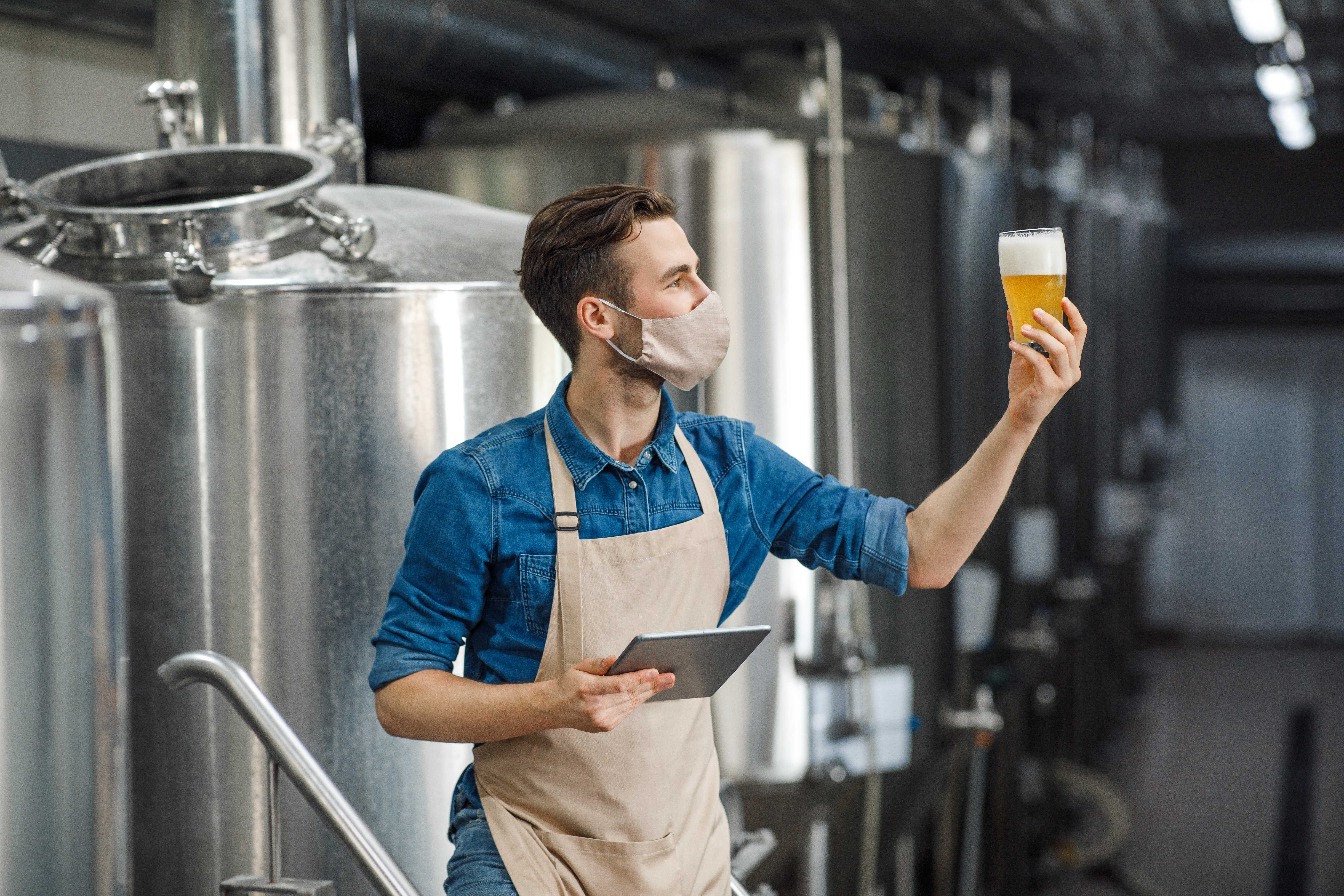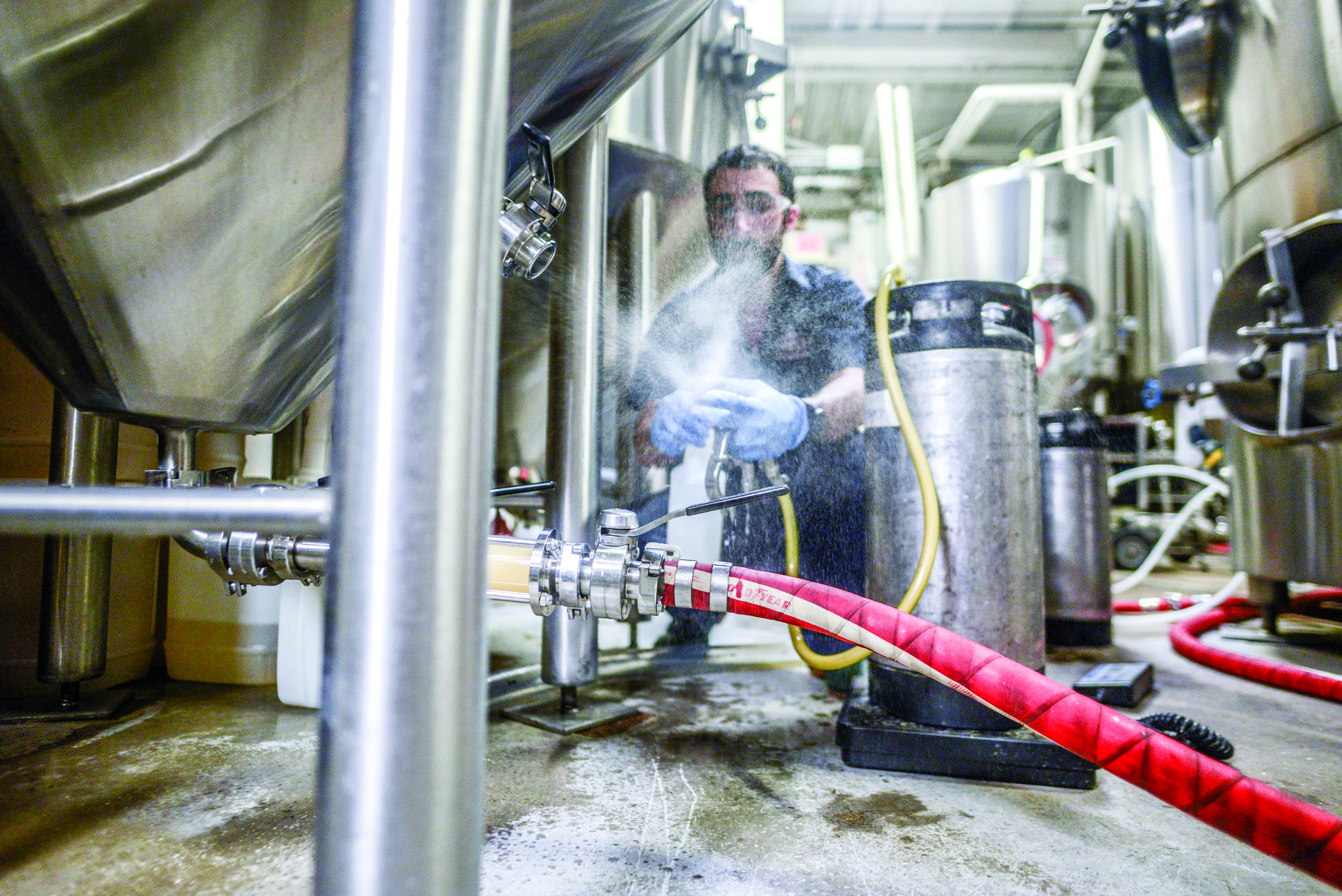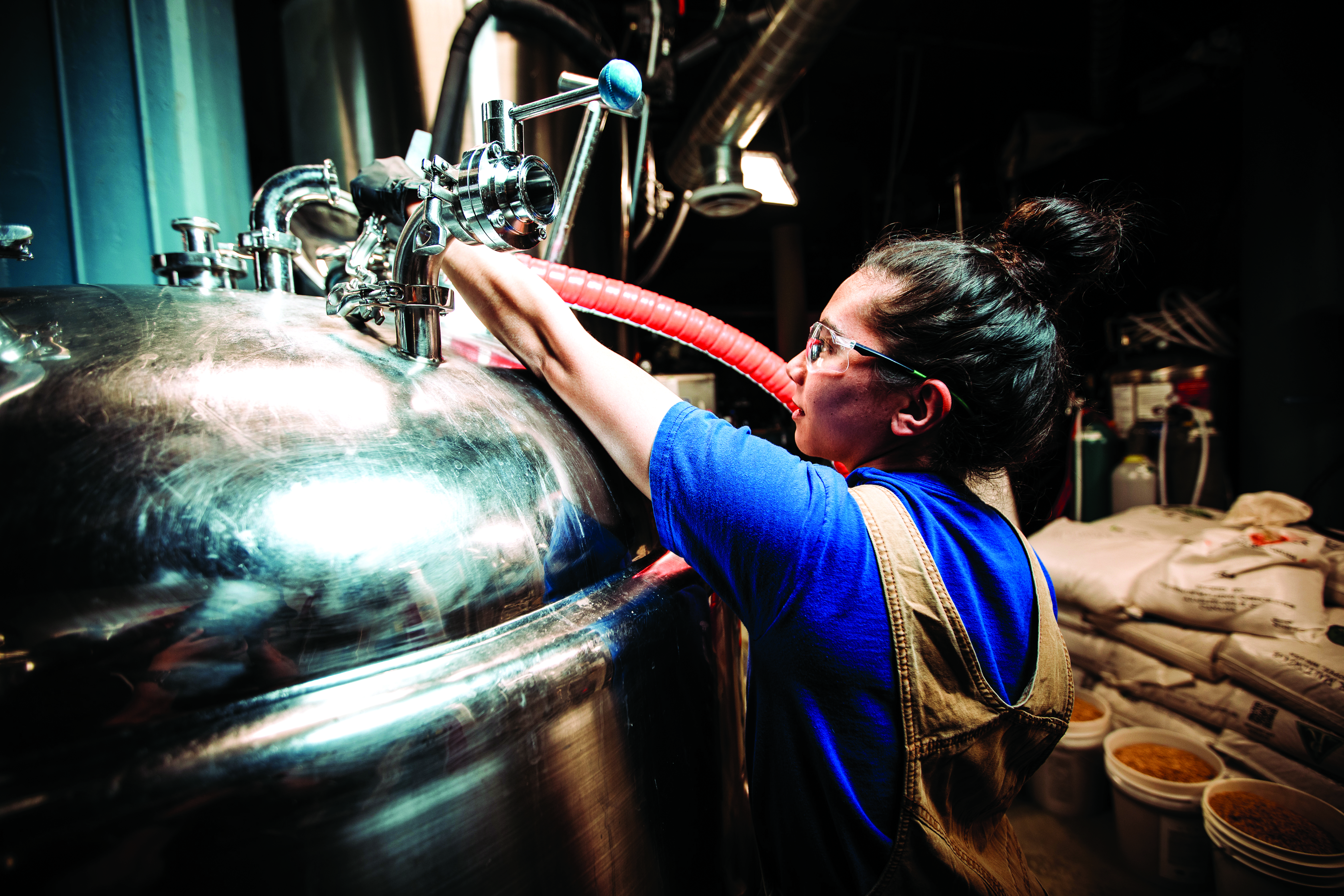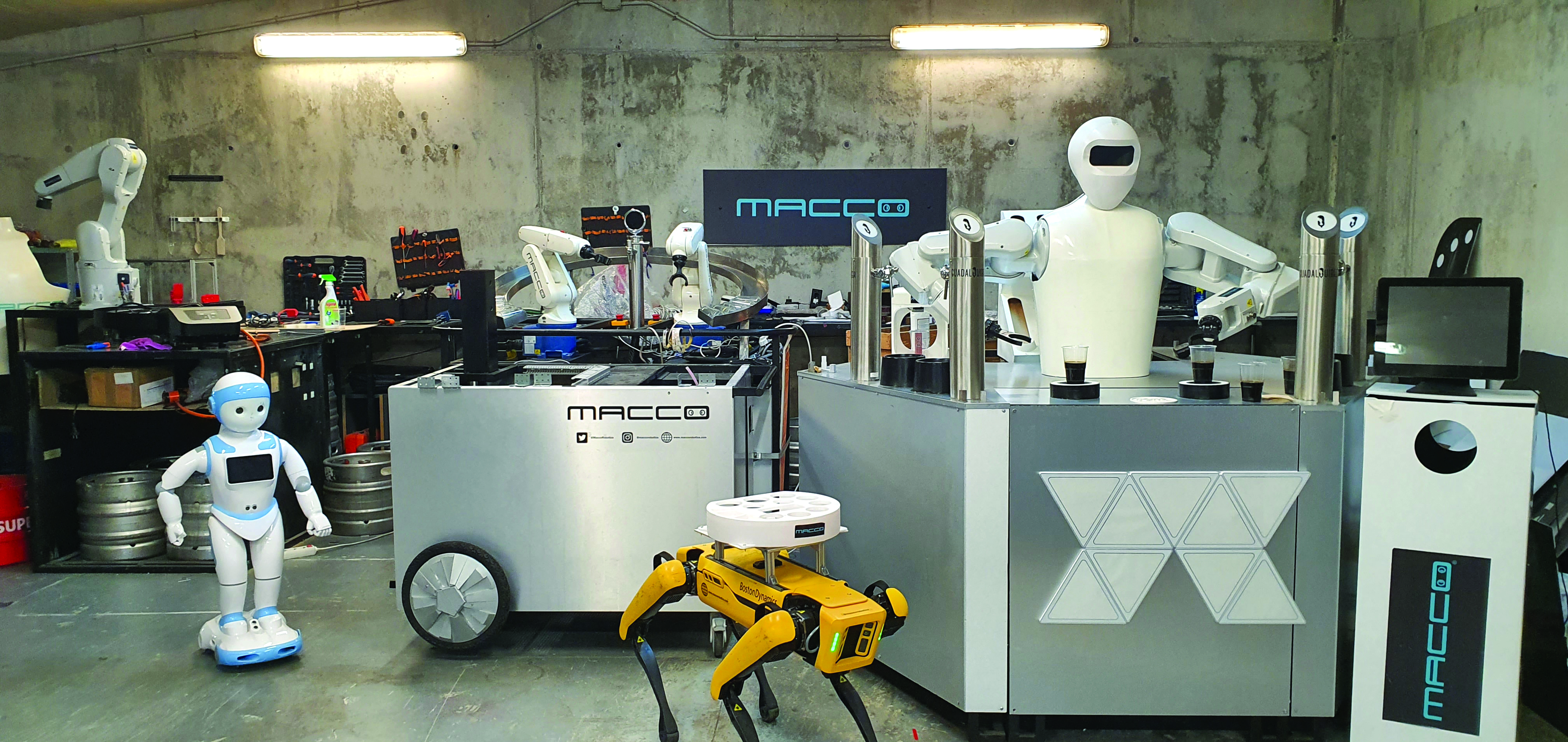The internet of beer
IoT devices are transforming brewing, both in the professional breweries and the home

Brewing is one of the oldest crafts in the world, with the first beer recipes dating from thousands of years BCE. But from home brewers to industrial producers, technology is an increasingly vital ingredient to making the perfect ale.
Brewing involves a handful of processes that haven’t changed for decades: malting, where the enzymes in grains like barley are activated; mashing, where those grains get milled and soaked in hot water to break them down; filtering the grains from the liquid; boiling, where the liquid is heated up with additional flavourings; and the final stage, fermentation, where the beer takes on its own distinctive flavour.
The machinery that handles all of this remains largely unchanged too. Yet as any beer lover will tell you, the past couple of decades have seen an explosion of craft breweries, expanding the types, flavours, and styles of beer that drinkers can enjoy.

The rise of the microbrewery
These changes in the beer world have been brought about by the manufacturers of brewing equipment starting to think small. Historically, brewing hardware was the reserve of big drinks companies – but then vendors began to make cut-down versions, making it possible for smaller-scale operators to set up craft and microbreweries. "It’s not necessarily new technology that’s enabled the rise of small breweries in the last few decades, but the scaling down of existing technology to sizes that make sense and work for smaller members," said Chuck Skypeck, technical brewing projects manager at the Brewers Association.
For example, hardware for canning beer in a format that worked for smaller producers simply didn’t exist 15 to 20 years ago, while more recently the technology to remove carbon dioxide generated during beer fermentation has become available to smaller brewers. The captured CO2 can then be reused to carbonate beer, or put to work in other brewing processes.
However, it’s in the smallest of microbreweries – the back bedrooms and spare garage space of the home brewers – that technology is really making a difference. Home brewing used to involve a few buckets, an airing cupboard and, often, results that tasted like the contents of the drip trays at your local. But a new crop of machines are helping home brewers make deliciously drinkable ales.
Companies such as PicoBrew and Coopers’ BeerDroid offer devices and apps that allow home brewers to produce their own batches of beer without the traditional equipment – and the without the traditional funky-tasting results. The original all-in-one machine is the MiniBrew, created by a Dutch firm of the same name after raising almost £250,000 from an Indiegogo campaign and £6.8m in venture capital funding. Company co-founder Bart van der Kooij began working on the machine after growing frustrated by the inconsistent results of his traditional home brew efforts. The first commercially available MiniBrew machine launched in 2019, and the equivalent of 186,000 bottles of beer have been made with the machines since.
Sign up today and you will receive a free copy of our Future Focus 2025 report - the leading guidance on AI, cybersecurity and other IT challenges as per 700+ senior executives
The MiniBrew takes the guesswork out of making beer at home. Beginner brewers simply need to order ready-made boxes of ingredients designed to make a particular recipe; after mixing the ingredients, they then scan a QR code into the MiniBrew app to give the machine its instructions on how to make that particular recipe, and the machine takes care of the mashing and brewing. A few hours later, the beer is ready for fermentation to begin; a few weeks later, your batch of beer is ready to drink.
While the MiniBrew handles much of the hard work, van der Kooij still wants users to remain connected to the brewing process. "I believe beer is craftsmanship,” he said. “If you want to create it yourself, there should be a human touch in the process. If you completely rule that out, then it’s just like making coffee – push a button and you get it. That’s something that we don’t want to achieve."

So once a home brewer has built up a bit of experience, they’re free to create their own recipes, try new combinations of ingredients and vary the work that the machine does. When they crack a winning formula, they can share it with others on the MiniBrew platform.
The company is exploring a similar model for connecting breweries and drinkers around the world, supplying recipes for the beers normally found in bars and off licences, so users can make their favourite brews at home. "The beer brewing industry has been underserved by technology for too long," said van der Kooij. "We believe it can help you brew a better beer."
While all-in-one machines remain rare due to the upfront costs, you can expect automated home brewing to become more commonplace over time. "With respect to automation, the sky is, as ever, the limit,” said Dave Carpenter, editor-in-chief of Zymurgy, the journal for American Homebrewers Association members. “Virtually anything can be automated today, either by purchasing a dedicated piece of equipment or by designing and building a custom gadget."
The new brew
RELATED RESOURCE

Automation isn’t just for home brewers. In recent years, breweries have begun turning to technology to guarantee the taste and consistency of their beer. An internet-of-things approach can be used to measure and adjust factors that affect the crops that are used in beer – for example, monitoring the soil the crops are grown in to ensure the best-quality ingredients. When fresh hops are shipped to the brewing plant, they have to be transported within set ranges of humidity and temperature to stop spoilage, and delivered within a matter of hours; sensors inside transport vehicles ensure they’re travelling in optimum conditions, while GPS can track their journey times.
IoT sensors play a similar role during fermentation. Little thermometer devices can float in the beer wort as it ferments, using Bluetooth to relay information on the temperature of the beer during the process. The control software can use this data to moderate the temperature, to guarantee it stays within the boundaries needed for the right flavour and aroma. Using IoT doesn’t necessarily mean blowing the technology budget either: some brewers have used Raspberry Pi units as the controllers for temperature monitoring and adjustments.
Once the beer’s made, IoT can also be used for logistics purposes, cutting waste and ensuring timely delivery of beer to pubs, bars and supermarkets. RFID tracking systems allow businesses to track their kegs in transit – handy when their resale value, even when empty, mean they make an attractive target for thieves.
Artifici-ale intelligence
Becoming a brewer isn’t just a matter of learning technical skills; there’s a strong creative element in learning to combine and balance the hops, grains, yeast and other ingredients to create a good beer. This isn’t something you can learn overnight; it can take years of experience to master the process of creating recipes for new brews.
Recently, however, a new crop of brewers have started enlisting the help of artificial intelligence. The first AI-powered brew was released in 2016 by IntelligentX, with the producer collecting feedback from drinkers and feeding it into the algorithm to further tweak and improve the recipe.

The latest brewery to employ AI is MN Brew, a Swiss craft brewery that’s created a line of artificial intelligence-inspired beer called Deeper. To create Deeper, the company teamed up with the nearby University of Applied Science in Lucerne (HSLU) and local software company Jaywalker Digital. Originally the HLSU team had intended to use AI to diagnose skin diseases from photography, but realising they didn’t have enough data, they settled on building beer recipes instead.
The AI, called Brauer AI, is based on natural-language processing techniques, and has been trained on more than 150,000 beer recipes. Now available as a web app on the university’s website, Brauer AI can generate recipes based on brewers’ preferences, such as the style of beer, which hops a brewery has in stock, or which non-traditional ingredients they want to use.
The combination of ingredients used in Deeper isn’t one that a human brewer would necessarily have put together, according to Marc Brevin, a researcher at HSLU who worked on the project. "This is something in the domain of artificial creativity. It should help human brewers to look over the edge and try something new that they would never have thought about," he said.
MN Brew also used one of the recipes created by the AI to produce a speciality IPA. The resulting brew, is "crisp, slightly acidic but still smooth," said Karl Geiger, product development at MN Brew. "People have said they can taste lychee". The brewery hopes to introduce further AI-inspired brews in the future.
Bot brewing
With Covid-19 bringing no end of difficulties to the hospitality industry, one idea that’s been explored is whether robots could help the industry with its post-pandemic recovery. Spanish hardware company Macco Robotics, which makes robots for use in restaurants, hostelries and coffee shops, says it’s seen a change in people’s attitudes to robotic waiting staff. "The pandemic has affected the role of robotics,” said Kishhanth Reganathan, the company’s CTO. “Prior to Covid, robots were looked at as taking human jobs or just as marketing.”

Now, however, hospitality businesses are warming to the idea of mechanical servers. "Robots can serve more drinks per hour compared to humans, but that’s not the only goal,” said Reganathan. “Robots can be more creative in the drinks that are being served, and the quality that can be maintained throughout: if it’s the first cocktail or the thousandth cocktail, the quality is going to be same.”
Macco Robotics have built KIME, a robotic bartender. Sited in its own kiosk, the humanoid robot can be programmed to pour a whole range of drinks from coffee and milkshakes to beer and cocktails. The technology is based on the same type of robotic arms found in industrial applications such as car factories or agriculture – but miniaturised and refined to serve thirsty drinkers, who can place their orders and pay via an app or a touchscreen.
While KIME is designed to pull pints while you wait, Macco Robotics also makes robots that can bring drinks to tables. A partnership with Boston Dynamics has already seen the company’s dog-like robot dispatched to a busy Seville bar to deliver beers to punters.
Does the advent of robot servers mean that the age-old practice of sharing your woes with the barman might be on the wane? Reganathan believes not, as robots work best in high-traffic areas where speed is of the essence: nightclubs, festivals, modern bars frequented by younger drinkers who “just need the beer fast and don’t care who gives it”. It’s the older generation, the pub dwellers, who “want that small talk with a bartender while they get their drink," he said.
That doesn’t mean there’s no role for the robots in your local. "When it comes to experiential hospitality, I guess robots will be on the back end and not on the front end," said Reganathan. So relax – you’ll still have someone to moan about the weather to at the King’s Arms.
3D-printed bar snacks
If you’ve ever looked at Star Trek’s replicator dishing up dinner on the Enterprise and thought “I wouldn’t mind one of those”, you’re not alone. 3D printing companies are increasingly retooling their machines to turn out beautifully-crafted foodstuffs on demand.
Printing food works pretty much the same as printing other materials: a substance is extruded through a nozzle and built up in a series of fine layers, allowing a 3D design to be gradually created. Right now, food printers can now create shapes out of anything from chocolate to pizza dough, pancake batter and even biscuit.
Chefs were among the early adopters of the technology, using the machines to create eye-catching and intricate dishes: one enterprising company named FOODINK toured cities across the world with a pop-up restaurant where everything, including all the food, utensils and furniture, were made by 3D printing.
3D printers are also taking off in restaurants looking for new ways to customise their food. One Japanese restaurant reportedly plans to create 3D-printed meals customised to individuals’ health needs. The company behind the idea, Open Meals, has experimented with recipes that can be shared over the internet and printed out anywhere in the world, allowing people to experience meals from restaurants across the globe without hopping on a plane.
For anyone that’s watched Seaspiracy and fancies their sushi a little more plant-based, there’s a 3D printer for that too. Companies including Revo Foods are looking to use 3D printers to make sushi from plant proteins that resemble the look, texture and taste of fish.
-
 Gender diversity improvements could be the key to tackling the UK's AI skills shortage
Gender diversity improvements could be the key to tackling the UK's AI skills shortageNews Encouraging more women to pursue tech careers could plug huge gaps in the AI workforce
-
 Researchers claim Salt Typhoon masterminds learned their trade at Cisco Network Academy
Researchers claim Salt Typhoon masterminds learned their trade at Cisco Network AcademyNews The Salt Typhoon hacker group has targeted telecoms operators and US National Guard networks in recent years